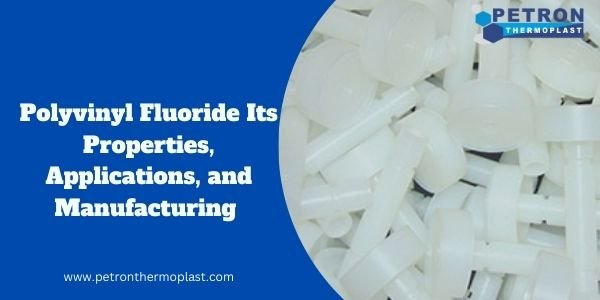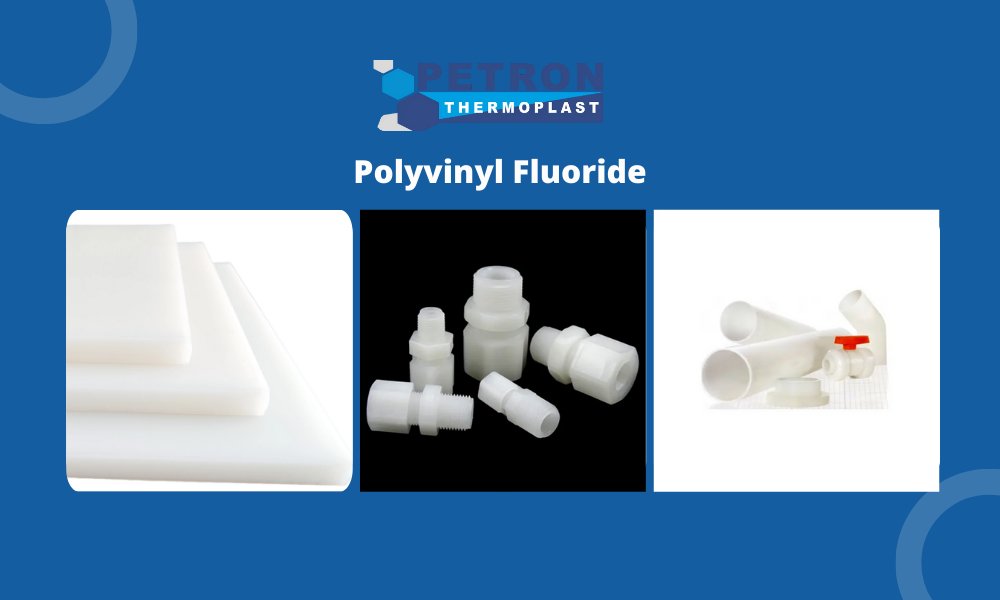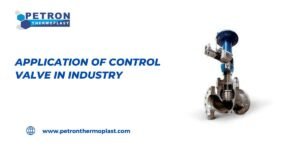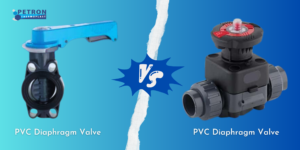Introduction
In the expansive tapestry of polymer science, one polymer emerges as a quiet yet influential protagonist, shaping industries with its remarkable versatility and distinctive attributes. This in-depth exploration embarks on a journey into the intricate world of Polyvinyl Fluoride, an enigmatic polymer that not only defies the conventional boundaries of materials science but also contributes significantly to the technological and industrial landscape.
As we unravel the molecular intricacies, delve into its multifaceted applications, and trace the intricate path of its manufacturing, Polyvinyl Fluoride emerges not just as a material but as a symbol of innovation and progress. This comprehensive narrative aims to shed light on the profound impact of Polyvinyl Fluoride, unveiling its properties, exploring its diverse applications, and immersing ourselves in the fascinating realm of its manufacturing processes.
Join us as we navigate through the labyrinth of science and industry, unraveling the story of Polyvinyl Fluoride – a polymer that transcends boundaries and stands as a testament to the ceaseless pursuit of knowledge and excellence in the dynamic world of materials.
Understanding Polyvinyl Fluoride
Diving into the fundamental essence of Polyvinyl Fluoride reveals a captivating narrative at the molecular level. At the heart of this remarkable polymer lies an intricate dance of chemistry and structure. Polyvinyl Fluoride, a thermoplastic marvel, unfurls its molecular tapestry through a symphony of vinyl fluoride monomers engaging in a delicate choreography during the polymerization process.
Picture a mesmerizing tapestry, each thread representing a vinyl fluoride molecule, weaving itself into the larger fabric of Polyvinyl Fluoride. This process is not merely a chemical reaction; it is an artistry of molecular intricacy. As these molecules entwine, they bestow upon the polymer a unique resilience and adaptability, akin to the interplay of instruments in a symphony.
The term “molecular tapestry” is not chosen lightly; it embodies the complex, interconnected nature of the polymer’s structure. The result is not just a material; it is a composition of molecular threads, each contributing to the overall strength and versatility of Polyvinyl Fluoride. This intricate dance of molecules, intricately intertwining, is the genesis of a polymer that transcends its chemical origins, emerging as a resilient and adaptable entity ready to weave itself into the fabric of various applications and industries.
Properties that Define Polyvinyl Fluoride
Chemical Inertness:
- Polyvinyl Fluoride distinguishes itself with exceptional chemical inertness, making it impervious to a wide range of aggressive chemicals. This property positions the polymer as a stalwart choice for applications in corrosive environments. Its resistance to chemical degradation ensures longevity and reliability, particularly in industries where exposure to harsh substances is a constant concern.
Thermal Stability:
- Boasting impressive thermal stability, Polyvinyl Fluoride can withstand elevated temperatures without succumbing to degradation. This particular attribute extends its utility in applications requiring resilience in the face of intense heat, making it a preferred material for components that must endure high-temperature conditions without compromising structural integrity.
Dielectric Strength:
- Polyvinyl Fluoride emerges as a champion in electrical insulation due to its notable dielectric strength. This property makes it an ideal candidate for various electronic applications, where the prevention of electrical conduction is crucial. In the world of technology, Polyvinyl Fluoride’s dielectric properties contribute significantly to the development of high-performance electronic devices.
Mechanical Resilience:
- Despite its seemingly delicate molecular structure, Polyvinyl Fluoride surprises with its mechanical resilience. This attribute makes it well-suited for applications demanding durability and strength. The polymer’s robustness ensures that it can withstand mechanical stresses, making it a reliable choice in scenarios where structural integrity is paramount.
Low Surface Energy:
- Polyvinyl Fluoride exhibits a low surface energy, imparting a non-stick quality reminiscent of PTFE (Polytetrafluoroethylene). This characteristic finds practical application in specialized coatings and non-stick surfaces. The polymer’s low surface energy contributes to its effectiveness in creating surfaces that resist sticking, making it valuable in industries where friction reduction and easy cleaning are essential.
Applications Across Industries
A. Aerospace Advancements
Polyvinyl Fluoride finds a pivotal role in the aerospace sector, where its lightweight yet robust nature contributes to the fabrication of components for aircraft and spacecraft. The polymer’s resistance to extreme temperatures and harsh chemicals makes it a preferred choice in the challenging aerospace environment.
B. Architectural Marvels
In the construction industry, Polyvinyl Fluoride surfaces as a material of choice for architectural membranes. These membranes, when coated with the polymer, exhibit remarkable weather resistance, ensuring the longevity of structures in diverse climates.
C. Chemical Conduits
Given its resistance to corrosive substances, Polyvinyl Fluoride pipes and conduits play a crucial role in transporting various chemicals. Industries reliant on safe chemical conveyance turn to this polymer to ensure the integrity of their processes.
D. Electronics Evolution
The electronics industry witnesses the integration of Polyvinyl Fluoride in the manufacturing of insulating films and components. The polymer’s dielectric properties contribute to the development of high-performance electronic devices, ushering in the next era of technological advancement.
Journey through Manufacturing
Polymerization Process
The birth of Polyvinyl Fluoride begins with the polymerization of vinyl fluoride monomers. This intricate process involves the initiation, propagation, and termination stages, with each step meticulously controlled to ensure the desired molecular structure.
Processing Techniques
1. Extrusion
Extrusion, a common technique in Polyvinyl Fluoride manufacturing, involves forcing the polymer through a shaped die to create various forms, including sheets and pipes. This process showcases the polymer’s versatility and ease of manipulation.
2. Injection Molding
Precision takes center stage during injection molding, where molten Polyvinyl Fluoride is injected into molds to produce intricate and customized components. This technique’s ability to capture intricate details amplifies the polymer’s applicability across diverse industries.
3. Coating Applications
The coating industry embraces Polyvinyl Fluoride for its prowess in providing protective and non-stick coatings. Substrates coated with this polymer exhibit enhanced resistance to abrasion, chemicals, and environmental factors.
Environmental Implications and Sustainability
Biodegradability Considerations
While Polyvinyl Fluoride exhibits remarkable durability, questions regarding its biodegradability persist. As the world grapples with environmental concerns, exploring sustainable alternatives and recycling methods becomes imperative.
Recycling Initiatives
In response to environmental consciousness, ongoing research endeavors focus on developing effective recycling methods for Polyvinyl Fluoride. From mechanical recycling to chemical processes, the aim is to mitigate the environmental impact and promote a circular economy.
Future Frontiers
Nanotechnology Integration
The synergy between Polyvinyl Fluoride and nanotechnology opens new frontiers. Nano-enhanced formulations promise improved mechanical strength, electrical conductivity, and thermal stability, propelling the polymer into cutting-edge applications.
Healthcare Innovations
The medical field anticipates breakthroughs as Polyvinyl Fluoride is explored for medical device applications. Its biocompatibility, coupled with its existing properties, positions it as a contender for advancements in healthcare technology.
Conclusion
In conclusion, Polyvinyl Fluoride stands as a remarkable and versatile polymer, weaving together a complex tapestry of molecular intricacies and diverse applications across industries. Its unique properties, including exceptional chemical inertness, thermal stability, dielectric strength, mechanical resilience, and low surface energy, position it as a material of choice in demanding environments.
From aerospace advancements to architectural marvels, chemical conduits, and electronics evolution, Polyvinyl Fluoride plays a pivotal role in shaping technological progress. The journey through its manufacturing, involving intricate polymerization processes and diverse processing techniques like extrusion and injection molding, highlights its adaptability and ease of manipulation.
However, the enigma of Polyvinyl Fluoride extends beyond its current applications. Ongoing research, recycling initiatives, and integration with nanotechnology signal future frontiers. As the polymer intersects with nanotechnology, promising advancements in mechanical strength, electrical conductivity, and thermal stability emerge, propelling it into cutting-edge applications.
Amid these strides in innovation, environmental considerations and sustainability come to the forefront. Questions about biodegradability prompt a closer look at recycling initiatives, aiming to mitigate the environmental impact and promote a circular economy.
Polyvinyl Fluoride’s journey is dynamic, marked by collaborations, regulatory considerations, and a responsive global market. Challenges related to biodegradability and recycling are met with ongoing innovations, reflecting a commitment to responsible usage and environmental consciousness.
In essence, Polyvinyl Fluoride’s story unfolds as a testament to human ingenuity, pushing the boundaries of materials science. As it continues to shape industries, contribute to technological advancements, and evolve in response to environmental concerns, Polyvinyl Fluoride remains a symbol of adaptability, progress, and limitless possibilities within the realm of polymers. If you have further any queries, then get help with Petron Thermoplast.
Frequently Asked Questions (FAQs) about Polyvinyl Fluoride
1. What is Polyvinyl Fluoride?
Polyvinyl Fluoride is a thermoplastic polymer formed through the polymerization of vinyl fluoride monomers. It exhibits remarkable chemical inertness, thermal stability, and mechanical resilience, making it a versatile material with diverse applications.
2. What are the key properties of Polyvinyl Fluoride?
Polyvinyl Fluoride is known for its chemical inertness, thermal stability, dielectric strength, mechanical resilience, and low surface energy. These properties make it suitable for applications in aerospace, construction, chemical conveyance, and electronics.
3. How is Polyvinyl Fluoride used in the aerospace industry?
In the aerospace sector, Polyvinyl Fluoride is utilized to manufacture lightweight yet robust components for aircraft and spacecraft. Its resistance to extreme temperatures and harsh chemicals makes it an ideal material for aerospace applications.
4. What role does Polyvinyl Fluoride play in construction?
In construction, Polyvinyl Fluoride is used for architectural membranes. When coated with the polymer, these membranes exhibit exceptional weather resistance, contributing to the longevity of structures in various climates.
5. Can Polyvinyl Fluoride be used for chemical conveyance?
Yes, Polyvinyl Fluoride is commonly employed in the transportation of various chemicals. Its resistance to corrosive substances makes it a preferred material for pipes and conduits in industries requiring safe chemical conveyance.
You May Also Like
Properties And Characteristics Of Polyvinylidene Fluoride (PVDF)
Know Brief Information On Polyvinylidene Fluoride From Petron Thermoplast
How To Choose And Use PVDF Filament Material
What You Need To Know About PVDF In Plumbing





